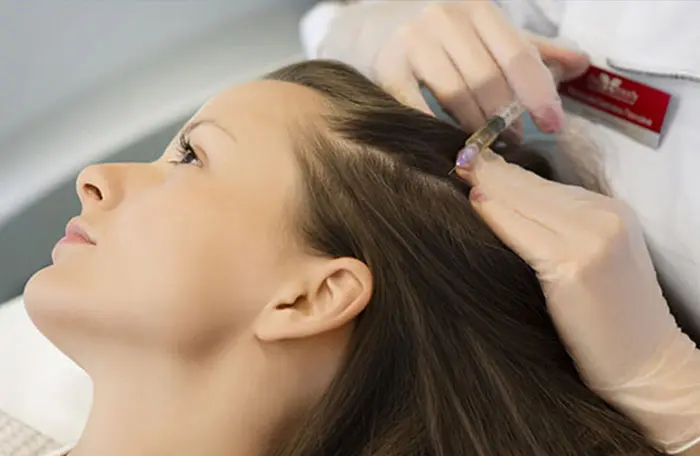A recent study has highlighted the success of combining platelet-rich plasma (PRP) with existing hair loss treatments for patients undergoing hair transplantation due to androgenetic alopecia (AGA). Researchers have explored PRP’s potential in stimulating hair growth since 2006, and its use has become widespread in clinical settings. Currently, minoxidil and finasteride are the only FDA-approved treatments for AGA.
According to the study, PRP enhances the microenvironment of the transplanted area by promoting cell growth, inhibiting cell death, and fostering the formation of new blood vessels. These effects create a more favorable environment for hair growth, including the reactivation of dormant hair follicles. Within three months, this approach is shown to stimulate new hair growth in patients.
The study, conducted from August 2019 to December 2022, included 30 patients aged 20 to 50, divided into two groups. The experimental group, consisting of 11 males and 4 females, received PRP injections in addition to standard drug therapy and hair transplantation. The control group, comprising 13 males and 2 females, underwent the same transplant procedure but without PRP.
The drug therapy regimen involved oral spironolactone or finasteride combined with topical minoxidil. Minoxidil was applied once daily for the first week and increased to twice daily thereafter. Male patients were given 1 mg of oral finasteride daily, while female patients took 20 mg of spironolactone twice a day.
Hair transplantation was performed using the follicular unit extraction (FUE) method, known for its minimal trauma and fast healing. The experimental group received approximately 15 mL of PRP before the follicle extraction, with additional injections at one and two months post-surgery. The final PRP concentration was approximately five times the patient’s baseline platelet count.
Before surgery, hair loss severity was assessed using the Norwood-Hamilton scale for men and the Ludwig scale for women. Both groups had similar baseline characteristics. However, post-surgery results showed significant improvements in the experimental group, with higher follicle survival and growth rates, as well as stronger hair.
Three months after surgery, follicle survival rates were 88.42% in the experimental group, compared to 78.24% in the control group. By six months, these rates were 82.17% and 74.01%, respectively. The experimental group also experienced faster initial hair growth, with an average of 17.67 days compared to 20.07 days in the control group.
Traction tests at the three-month mark revealed stronger hair in the experimental group, with 13 patients showing negative results (indicating no hair loss under tension) compared to 8 in the control group. Postoperative complications, including bruising, pain, and hair curling, were observed in both groups, but the experimental group had fewer cases of transient itching and folliculitis.
While the results are promising, the study’s authors note that there is no consensus on the optimal concentration of platelets in PRP or standardization of treatment protocols. As such, further large-scale, multicenter, randomized studies are needed to better understand PRP’s therapeutic effects and refine treatment methods.
You Might Be Interested In:

